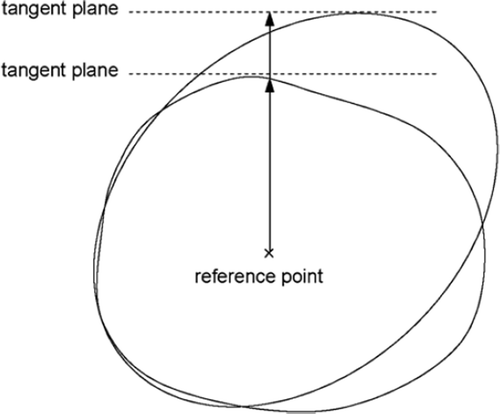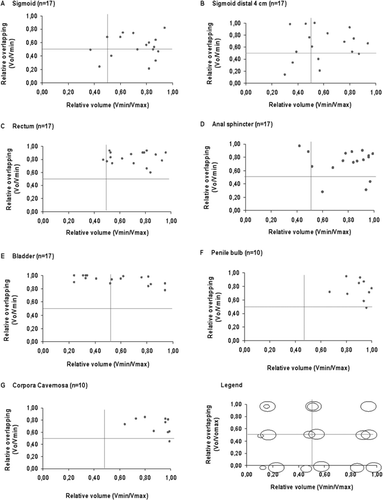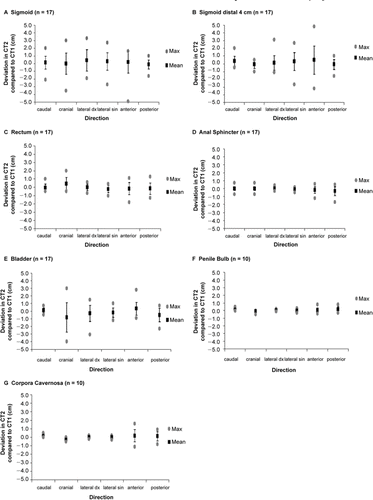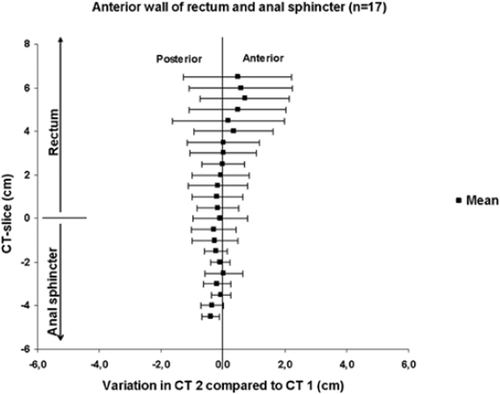Figures & data
Table I. Demography.
Figure 1. The variation in position measured as the absolute difference (cm) of extreme points compared to a given reference point of each organ at risk in two consecutive CT-scans.

Figure 2. Relative volume (Vmin/Vmax) of the smaller volume compared to the larger volume and relative overlapping (Vo/Vmin) for the organs at risk. The legend shows how the diagrams display relative volume and overlapping of the organs at risk. A value of 1 in relative volume means that the two volumes are equally large. Values approaching 0 means that there is a large difference in volume. A value of 1 in relative overlapping means that the smaller volume lies within the larger volume. A value of 0 means that the two volumes are separated.

Table II. Absolute volume (cm3), relative volume† and relative overlapping* in two consecutive CT-scans for seven organs at risk in the small pelvis.
Table III. Mean, median and range of baseline characteristics given in .
Figure 3. Deviation of the extreme points in the organs at risk, CT 2 compared to CT 1. The extreme points in the six directions together define the smallest “box-volume” that encloses the organ at risk. A positive value represents movement in the direction indicated on the x-axis. The diagrams show the mean±1SD and the maximum deviation measured.

Table IV. Proportion of delineated organs at risk that reaches >0.5 in agreement.


